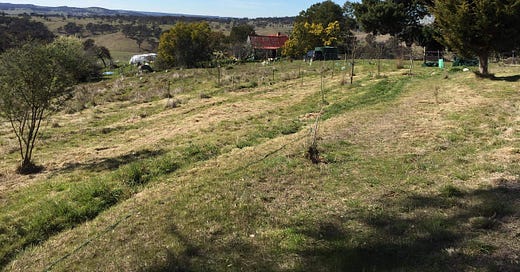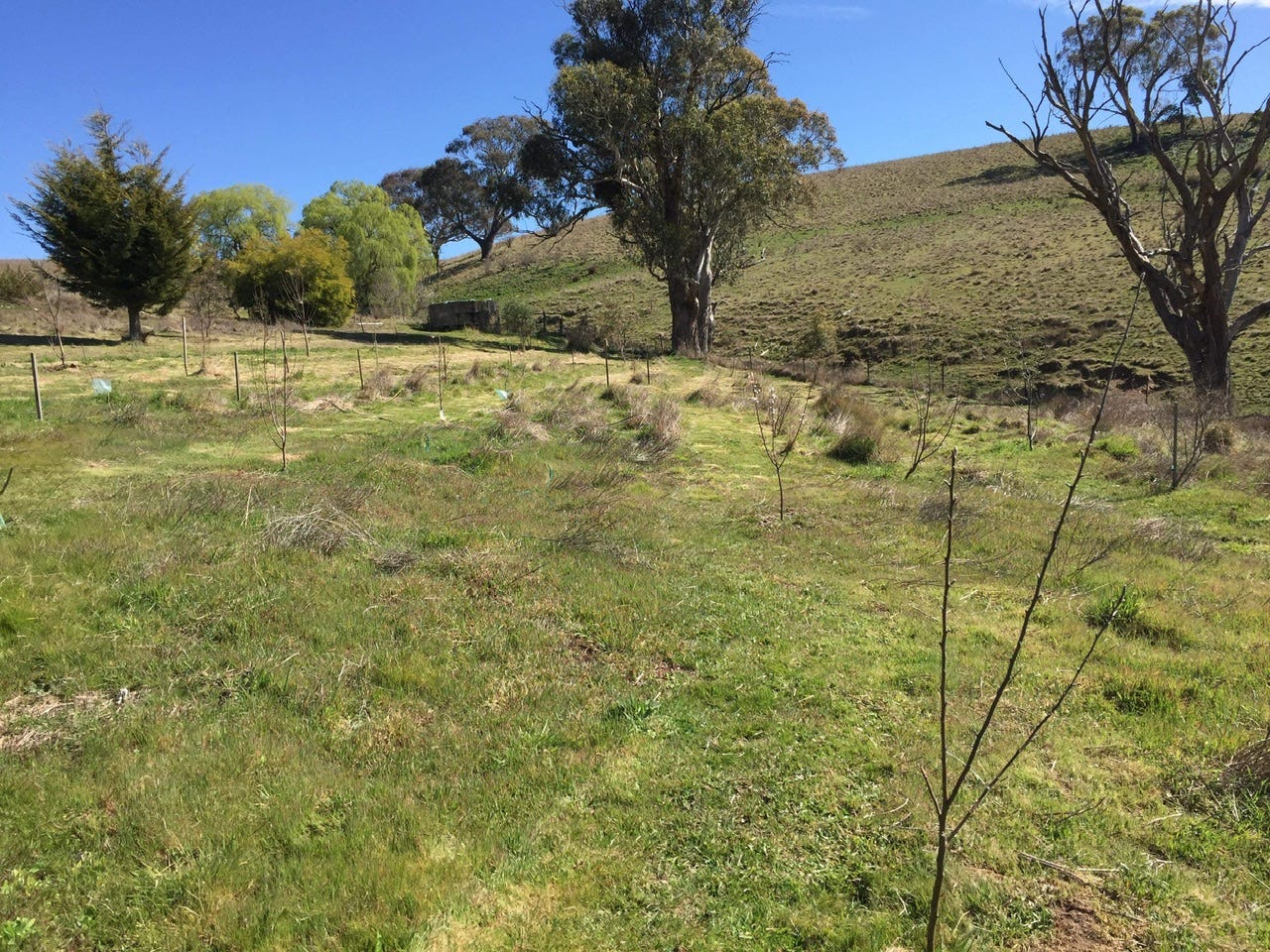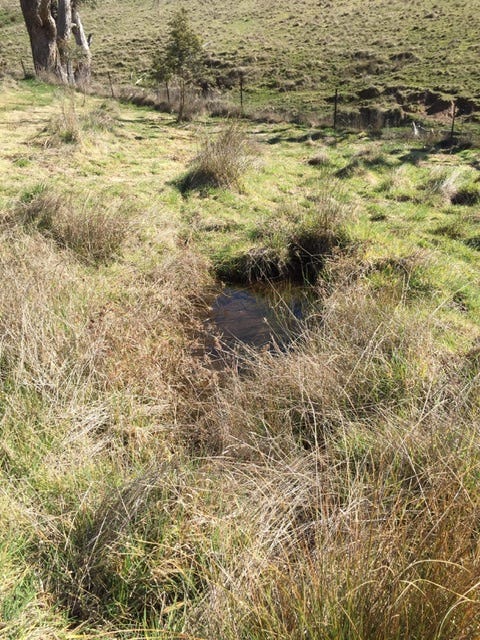I need alot of mulch to put on the garlic beds so this week I decided to mow the space for the food forest. It was also a good chance to layout the paths that will twist through the forest. The paths follow the contour across the hill rather than straight lines.
In the middle of the forest is a frog pond. According to the Frogid app www.frogid.net.au/ we have 18 different species here at the farm. There’s a great chorus of frog songs at night especially after it rains. Listen to the sound of the frogs in this recording. I will keep the north of the pond clear of trees to allow light into the centre of the forest and keep this wonderful view.
For those not familiar with food forests they are a man made forest of food and other supporting plants. Like a natural forest all layers are filled in with plants from the canopy through to understory, shrub, ground cover, root and vine layers. Right now we just have a grass paddock with a few fruit trees struggling to survive. The process of converting all this grass into a forest will be fast tracked by planting many different species. At first the focus is on fast growing pioneer plants that will be replaced over time by the food plants as the forest matures.
Now that the paths have been laid out I can really get a feel for where all the plants will go. Over the spring I’ll plant out all the things I have been propagating including apples, plums, peaches, pears, figs, quince, acacias, salvias, buddlieas, grapes, flowers, sun chokes, ginger, comfrey and more.
Some of the plants ready to go.
Here’s an inspiring video of a mature food forest in New Zealand. I’m hoping that in 10 years our food forest will start to feel like this.








The sound of different types of frogs singing together is quite peaceful. Can't wait to see the whole plot of land grow into a mature forest.